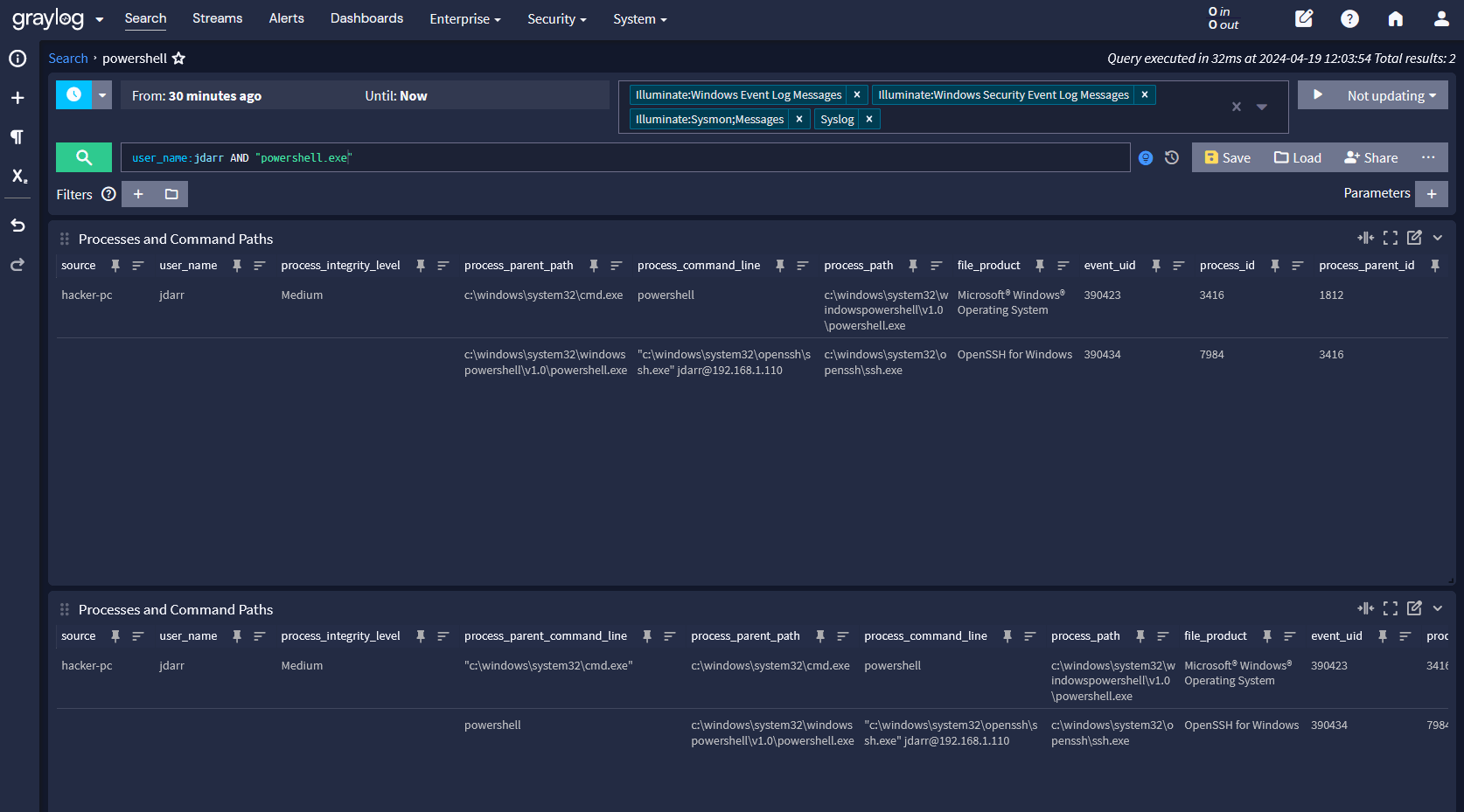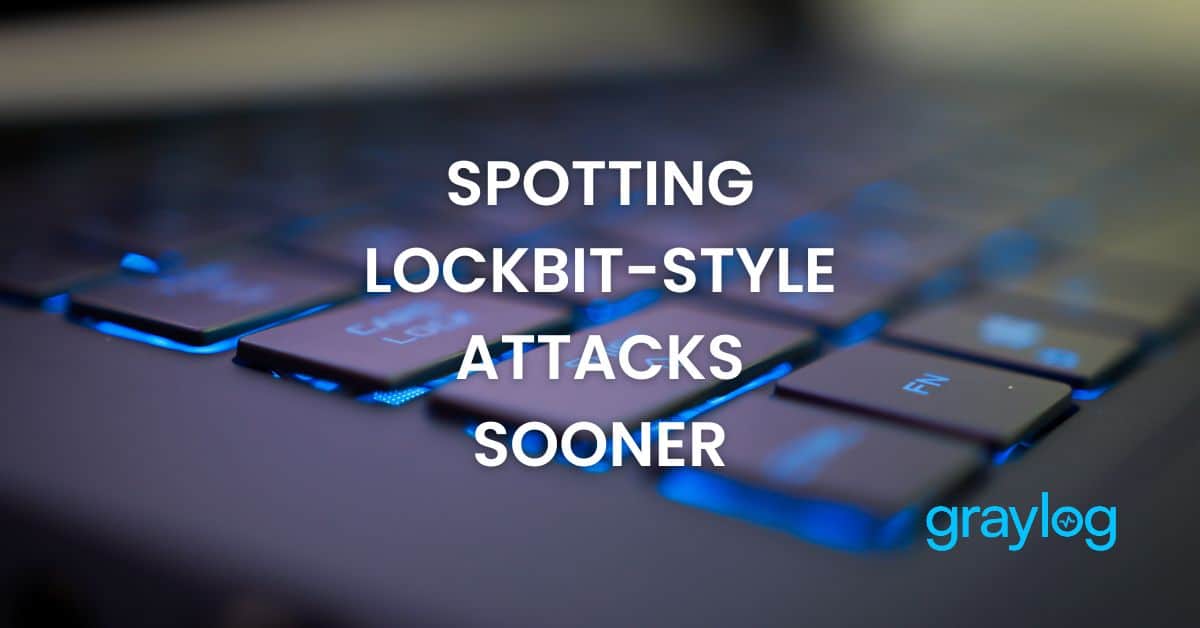The DFIR Report recently detailed a LockBit attack with ransomware intrusion that succeeded without advanced exploits or zero-day vulnerabilities. The attack relied on a stolen AnyDesk installer, credential reuse, and renamed PowerShell scripts that blended into routine activity. These moves were not sophisticated, but they were fast and effective. The end result: complete domain encryption.
At Graylog Labs, we view incidents like this as reminders of how quickly common techniques can escalate into catastrophic outcomes. The lesson is clear: security teams cannot afford to wait for encryption to begin. Detection must focus on spotting early signals, enriching context, and correlating activity into something actionable before ransomware takes hold. Graylog provides the platform to make that possible.
The Attack Chain in Motion
The LockBit intrusion followed a familiar pattern:
- Access began with stolen credentials used through an AnyDesk session on a Citrix Gateway.
- Once inside, attackers deployed Cobalt Strike for command and control.
- Lateral movement followed through Remote Desktop Protocol (RDP).
- Reconnaissance included BloodHound and standard utilities like exe.
- Finally, LockBit ransomware was executed as the payload.
A renamed PowerShell script, socks.ps1, played a critical role by staging files for encryption from the %Temp% directory. Renaming concealed its purpose, but the behavior still left detectable environmental signals.
This sequence underscores why defenders must rely on behavioral detection, correlation, and context rather than simple file identification.
Detecting Ransomware Tactics with Graylog
At Graylog, we focus on how detection platforms can convert ordinary log data into meaningful insights. LockBit-style attacks generate activity across multiple systems, and Graylog’s Threat Detection and Incident Response (TDIR) capabilities help security teams recognize these activities faster.
1. Establish Baselines for Normal Behavior
Attackers often exploit legitimate credentials. By enriching logs with GeoIP and asset data, Graylog flags unusual activity such as logins from unexpected locations, odd hours, or unrecognized devices. A Citrix login that looks legitimate on the surface becomes suspicious when correlated with abnormal context. Early signals like these can be investigated before lateral movement occurs.
2. Correlate Activity into a Cohesive Narrative
Security teams struggle with alert fatigue because tools produce too many disconnected warnings. Graylog correlates related events, including RDP sessions, PowerShell execution, and credential use, into a unified detection. Instead of dozens of fragmented alerts, analysts receive a single narrative that shows what is happening and where. This approach reduces triage time and makes response more focused and effective.
3. Investigate with Context and Speed
Even when attackers rename scripts or attempt to mask their activity, behavior leaves footprints. Graylog allows analysts to pivot from any artifact such as an IP address, filename, or account to see the broader context. Investigations that once required manual log searches can now move quickly, helping defenders contain incidents before encryption begins.
Practical Steps Security Teams Can Take Today
Graylog recommends three immediate actions for defenders looking to strengthen ransomware detection and response:
- Secure remote access: Enforce multi-factor authentication, restrict sessions to VPNs, and monitor for unusual login behavior.
- Monitor PowerShell execution: Pay close attention to scripts running from temporary directories or files with renamed extensions.
- Correlate activity early: Use correlation rules to link reconnaissance, lateral movement, and privilege escalation before ransomware deployment.

These steps are achievable with Graylog’s built-in detection and investigation capabilities. They move detection from theory into practice.
Routine Tactics Require Relentless Detection
LockBit attackers did not rely on advanced methods. They relied on speed, efficiency, and overlooked warning signs. That pattern is consistent across many modern ransomware cases. Success for defenders depends on detecting those signs as early as possible and connecting them into an understandable picture.
Graylog Security equips organizations with the ability to capture log data and tell the story of how an intrusion started, how it spread, and how to stop it before it ends in encryption. With a focus on visibility, correlation, and context, security teams gain the clarity needed to respond decisively.
At Graylog, we refine detection content and workflows so defenders can stay ahead of threats that rely on ordinary tools and predictable weaknesses. Ransomware groups will keep moving fast. The right approach to detection ensures defenders move faster.


